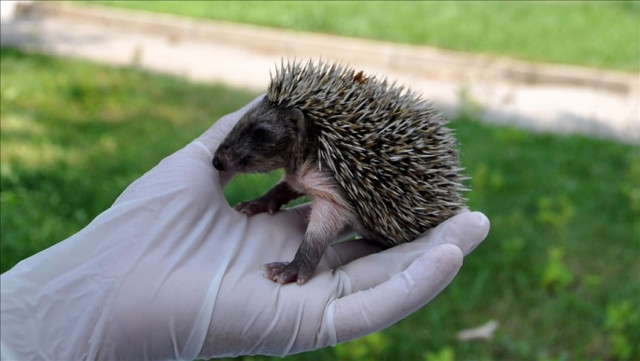Porcupines wreak havoc on IIOJK orchards
Officials advise farmers to wrap trees with gunnysacks and mesh wire as rodents feed on bark

Manzoor Ahmad, a farmer in Indian Illegally Occupied Jammu and Kashmir (IIOJK), will helplessly watch dozens of fruit trees in his orchard, planted by his father 40 years ago, wither away in the next few months.
Ravenous porcupines have stripped the outer bark of these trees and ate the softer inner bark, exposing it to diseases and elements of nature.
“I have seen it in the past, too. It is like watching a family member die. I have grown up with these trees,” Manzoor, 50, said.
Manzoor’s orchard in Koil village in the southern Pulwama district has about 40% of its fruit trees damaged by the rodents. Other orchards in the vicinity have also suffered damage to various degrees.
Officials are assessing damages but Ajaz Ahmad Bhat, director of the horticulture department of the Himalayan region, said that a preliminary survey suggests porcupines have laid waste to thousands of mostly almond trees grown over karewas of central and southern IIOJK villages. In some areas, they have destroyed saffron plants.
Karewas are terrace-like plateaus with rocky or muddy soil. Almond, apple and saffron are extensively grown over the karewas. According to Bhat, porcupines thrive in bushes that grow in the uncultivated karewas and often stray into nearby orchards when they run short of twigs, nuts and other flora constituting their diet.
“The majority of these almond trees would be 20 to 30 years old. Years of toil was destroyed overnight,” Bhat said.
Manzoor said during and immediately after winters in the past, especially when it snows heavily, porcupines would eat the bark of a few trees. But this year’s feeding frenzy is unprecedented, he said. The occupied valley witnessed one of the harshest winters and heavy snowfall this season.
The porcupine population has grown unchecked in the past decade in IIOJK, Bhat said. The rodent can live up to 27 years and in the absence of predators, it virtually has a free run in the valley. The director has asked local wildlife authorities to pitch in and recommend remedial measures for preventing further damage to crops.
Bhat said farmers have been asked to wrap the trees with gunnysacks or mesh wire and maintain vigil during nights when porcupines come out of burrows to forage. His department will provide financial assistance to needy farmers for buying the wrappings. Also, he has asked district-level horticulture officers to spread awareness among farmers so they could take preventive measures.
Rainy weather and sighting of leopards in several civilian habitations during the past few months make nightly vigils difficult for most people, said Manzoor.
“But we can’t watch them destroy our livelihood. We will have to do something. We had asked the authorities in the past to check porcupine growth but they did nothing,” he said.
According to horticulture department data, about 3.3 million people derive their livelihood from the horticulture sector. Some 700,000 families are directly or indirectly engaged in this sector, it said.



















COMMENTS
Comments are moderated and generally will be posted if they are on-topic and not abusive.
For more information, please see our Comments FAQ